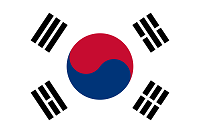Three of Asia's major economies are expected not to do so well in the first quarter of next year, primarily because of lapses in certain important healthcare sectors affecting drugmaking, according to the latest reports from MarketResearch. Countries considered emerging markets are set to reap the rewards of their negative positions.
Major drugmakers flagged some of these issues in third-quarter earnings releases, though the focus was mainly on heavyweight China--which was not the subject of the just-released market outlooks.
Japan, India and Thailand face their own particular local problems that led MarketResearch to have low expectations for them as part of its series of outlook reports in the healthcare and pharmaceutical sector for 2016's first quarter.
Still considered by some counts to be the second-largest economy in the world, Japan's delay in entering the medical tourism industry is likely to leave it well behind the biggest competitors, Malaysia and Thailand, and their well-established presence in that sector.
That leaves drugmakers with the burden of a reduction of $11 billion in Japan's pharmaceutical expenditures in 2015 from the $106 billion spent in 2014, and a negative growth rate of 10.5%, primarily because of a decline in the value of the yen. Overall healthcare spending also declined in Japan during 2015, the report said.
India's pharmaceutical spending, on the other hand, remained steady at $16 billion, with only a 4.9% growth during the year in pharmaceutical expenditures, but the nation saw a $5 billion increase in spending in the overall healthcare sector. India's main problem in drugmakers' eyes, the report said, remains its price controls.
Thailand is in a period of what the report called "a transformation" because of various internal problems that are expected to affect its spending in the upcoming first quarter. Still, it saw a $100 million increase in drug spending this year over last.
Australia, another major regional economy, the third most attractive market for drugmakers, received only a slightly better outlook, which the report termed "moderate." The nation, it says, faces an increase in chronic diseases as it grapples with decisions on what drugs to include in its Pharmaceutical Benefits Scheme. The national policy also calls for cost containment. This year's drug spending in Australia declined by $1.8 billion to $10.35 billion.
 South Korea, whose health spending is larger than Australia's and is the largest of the Asian nations, earned a better outlook in the reports. South Korea's reliance is on biomedical research and development for future growth, but it has to bounce back from a $1.2 billion drug-spending decline this year, down from $15.8 billion in 2014.
South Korea, whose health spending is larger than Australia's and is the largest of the Asian nations, earned a better outlook in the reports. South Korea's reliance is on biomedical research and development for future growth, but it has to bounce back from a $1.2 billion drug-spending decline this year, down from $15.8 billion in 2014.
Taiwan, Pakistan and Kuwait received rosier prospects in the reports. Taiwan can look forward to overall economic growth, while Pakistan can expect strong growth due to a steady increase in household income. Kuwait's drug sector should be insulated from other economic problems, primarily oil prices, because of the nation's economic structure. It does face a shift away from spending on innovative drugs to generics as a result of growth in insurance coverage.
Of the 8 countries covered in the reports, Pakistan stands out as the one in the best position. Its drug spending increased by 7.1% in U.S. dollar terms this year at a time when most of the others saw insignificant increases, if not declines.
- here's a summary of the India outlook
- here's a summary of the South Korea outlook
- here's a summary of the Taiwan outlook
- here's a summary of the Kuwait outlook
- here's a summary of the Japan outlook
- here's a summary of the Pakistan outlook
- here's a summary of the Thailand outlook
- here's a summary of the Australia outlook